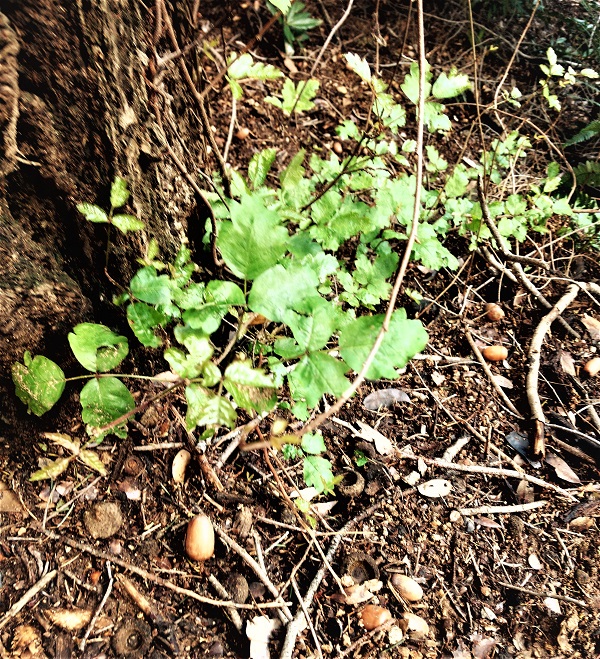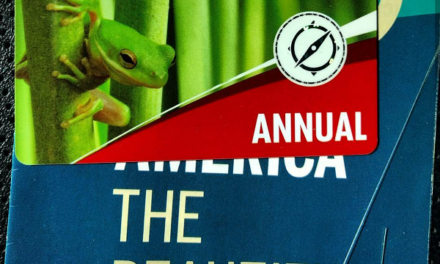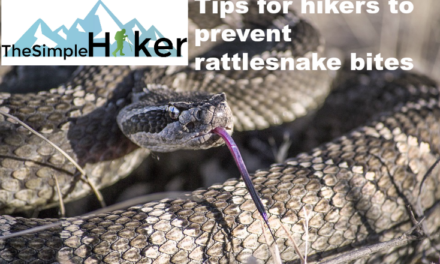Leaves of three – let them be. This is the type of plant all hikers should avoid. One of the most common rashes to hikers and other people outdoors is by three common plants: Poison Oak, Poison Ivy, and Poison Sumac. These three plants can be responsible for some incredibly bad rashes. Here is a hikers guide to avoiding and treating Poison Oak, Poison Ivy, and Poison Sumac.
The Hikers Guide to Poison Oak, Poison Ivy, and Poison Sumac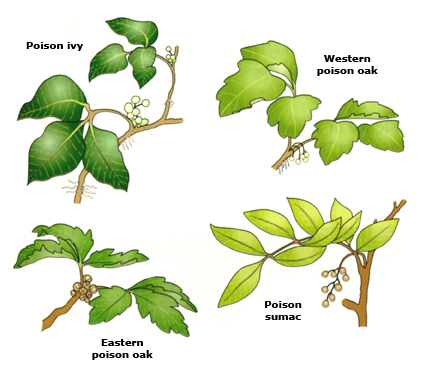
Where I live in Southern California, Poison Oak is common through out the hills and mountains. The only time I stumbled into this plant was when I was a child and went to go fetch a tennis ball that got away from my dog. Not knowing about the plant, my arm came into contact with Poison Oak and developed a blistery rash. This painful rash lasted for over a week. Regardless of your location, Poison Oak, Poison Ivy, and Poison Sumac all cause the same reactions and it’s all because of their oily compound: urushiol.
About half of all people react to these three plants and annually anywhere from 25-40 million Americans seek medical treatment for exposure to either Poison Oak, Poison Ivy, and Poison Sumac. Reactions happen when the oil comes in contact and penetrates the outer layer of skin. Once inside the skin, cells trigger an immune response within the body. Only one encounter with any one of these three plants is enough to cause the immune response.
How Poison Oak, Poison Ivy, and Poison Sumac is Spread
A person can come into contact with any part of the plant. The plant can touch the skin directly. Objects containing oil from the plants such as clothes or shoes can also cause a reaction. Burning of these three plants can cause small oil droplets to land on objects nearby and cause a reaction when those objects are touched. During the spring and summer months these plants are easier to identify because of their notorious leaves of three pattern. However, even the wood and roots from these plants can be harmful. Because of that, this plant is something to be aware of year round.
Signs and Symptoms From Poison Oak, Poison Ivy, and Poison Sumac
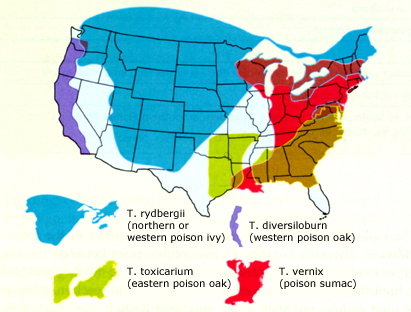
These plants are spread across the United States. These are the regions that poison oak, poison ivy, and poison sumac are located.
The oil from these plants can cause a variety of symptoms including:
- Intense Itching.
- Generalized redness or redness to where the plant touched.
- Fluid filled blisters (fluid from the blisters does not spread the rash).
- Any infected areas of the face or genitals can cause significant swelling.
Complications From Poison Oak, Poison Ivy, and Poison Sumac
The most common complications are localized skin infections from open skin from the rash. Be on the look out for puss filled drainage, redness spreading around the site, fevers, and wounds that won’t heal. Occasionally, urine retention is reported because of swelling to the penis. A rare and severe allergic reaction known as anaphylaxis can occur. If this occurs, severe swelling to the airway and shortness of breath means you need to call 911 right away and get to the nearest emergency room.
Preventing Reactions From Poison Oak, Poison Ivy, and Poison Sumac
- The most common way is to be alert and aware of what the plant looks like so you don’t come across it.
- Throw away any clothes that could be infected from them. Never wash these clothes in the laundry so that other clothes aren’t infected.
- If handling the plant, wear heavy duty vinyl gloves: Oil can go through rubber or latex gloves.
- Apply Bentoquatam cream: This is a barrier cream which helps act as a barrier to keep the oil from getting through the skin. You can purchase this barrier cream without a prescription and apply it before you think you might encounter the plant.
- Avoid itching the rash and blisters: Scratching the surface can open the blisters, cause more pain, and introduce bacteria and lead to infection.
Treatment For Poison Oak, Poison Ivy, and Poison Sumac
Simple treatments are usually all that’s necessary for coming into contact with these plants. If the rash is left untreated and a person doesn’t come into contact with anymore oil, it resolves in one to three weeks. Treatment options include:
- Gently was the skin: Wash the skin with warm soap and water. Vigorous scrubbing can be more harmful to the rash. Pay special attention to under the fingernails to make sure to scrub out any left over oils.
- Oatmeal baths and cool, wet, compresses to affected areas can help sooth itching and pain.
- Calamine lotion can help relieve symptoms
- Topical antihistamines or creams containing benzocaine and antibiotics like Neosporin or Bacitracin are not recommended.
- Oral antihistamines can be used to try to reduce itching – although the response is an immune response, not a histamine response.
- Topical steroids: only very strong prescription topical steroids have been shown to be effective these reactions.
- For severe reactions, oral steroids can be prescribed. However, oral steroids have numerous side effects and if you can avoid it, try to.
- For skin infections: antibiotics will be prescribed.
Hiking can be an awesome experience but with it also comes risks. Be aware of the three leaf pattern that Poison Oak, Poison Ivy, and Poison Sumac have and avoid it at all costs. remember: leaves of three, let them be.
Sources:
- Prok, L., MD., Thomas, M., MD. “Poison Ivy (Toxicodendron Dermatitis). UpToDate. 27 November 2017. Web. 2 April 2018.
- N.a. “Patient Education: Poison Ivy (The Basics).” UpToDate. 2018. Web. 2 April 2018.

